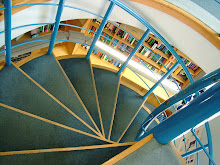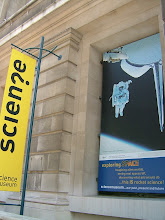World Science Fest: What's behind quantum mechanics?
By John Timmer Published: June 02, 2008 - 09:45AM CT
Friday night's session of the World Science Festival included a program on quantum mechanics entitled "The Invisible Universe," which included a panel discussion moderated by Alan Alda. Festival founder Brian Greene (who's actually a string theorist) provided the introduction to the quantum world, noting that, "100 years ago, one generation of physicists changed our understanding of reality." He said that society has adopted a lot of the lingo of quantum mechanics without really coming to terms of what it actually involved.
Greene tried to get the audience up to speed by talking about the now-famous double-slit experiment, using an example in which waves of water passing through a pool create an interference pattern. He then brought that into the world of electrons, which also form interference patterns when sent through a double slit, even when only one is sent through at a time. What is going through the slits, instead of an actual particle, appears to be a set of probability curves, which can interfere with each other on their way to determining where the electron lands.
The second example of quantum strangeness, which came during the ensuing discussion, was entanglement. Using up and down spin as an example, Greene described how two entangled particles could be separated, potentially by the entire length of the universe, and yet have their behavior remain linked. The consequence of the entanglement is that a measurement of the properties of one particle would instantly define the state of the other, no matter how large the separation between the two.
Quantum probabilities and a concrete world
These things profoundly violate what most people tend to think of as our orderly, causal universe. How do we make sense out of what we think of as a physical particle vanishing into a set of probabilities and then popping out, a particle again, at the far side? The panel included people who argued number of perspectives on this question.
Max Tegmark from MIT suggested that we register multiple things happening because all of them actually do happen in a series of related universes. According to Tegmark, a mathematical construct called Hilbert space can let us describe quantum behavior in a linear, causal, and 'real' manner but, to work, it requires that all quantum possibilities actually happen. Tegmark thinks they can, in nearby universes that split off and recombine to create the strange effects we measure.
Nobel Laureate Bill Phillips, who's a quantum experimentalist, took what he termed a "shut up and calculate" approach to the question. We're arguing over these different perspectives yet, "when we go into the lab, we get the same results." Phillips pointed out that there's no inherent reason to think that there's anything behind the quantum behavior we observe—it's just the nature of the universe. He noted that the graduate students he gets no longer have any issues with quantum behavior, and used that to suggest that it's really just a habit of mind (a mind that evolved to deal with a very concrete reality) that keeps many from being satisfied with quantum behavior.
The panel included a philosopher of physics, David Albert, that didn't really have a specific response he favored, although he clearly favored some response. Referring to the "shut up and calculate" approach, Albert pointed out that "nobody is born wanting to know the result of specific experiments," so to put the underlying principles off limits violates the nature of science. In Albert's view, "the problem isn't that Max's ideas are wacky—it's pretty clear that the world is wacky." The fear is that the wackiness may exceed our mental capacities; "is it stranger than we know, or stranger than we can know?" Albert asked.
New ideas vs. newfound comfort
Not surprisingly, the conversation frequently returned to Einstein, who was profoundly uncomfortable with quantum mechanics. Everyone agreed that this discomfort was often mischaracterized, though. It's frequently presented as an unease with the random nature of events, but nobody thinks Einstein expected that nature should make him (or anyone else) feel comfortable. Instead, Einstein seemed to have been unable to map quantum behavior onto anything he understood; as David Albert put it, it was like being told, "this bottle of water is Elvis Presley—it's not 'I don't believe that,' it's 'I don't know what that means.'"
Tegmark argued that any correct theory should seem weird, though, because the universe at the small scale is weird, and humans evolved to comprehend the large-scale world. He suggested that progress in the theoretical realm can be seen when people stop saying, "it's strange, and I hate it," and start saying, "I hate it." Tegmark was happy that there are a number of ways being tried to find some logic underlying the quantum world, saying, "it's better to bark up many trees than all going up the same one."
On that, everyone seemed to agree. Brian Greene argued that, as we get more information and ideas, quantum mechanics was likely to make more sense, and Alberts suggested three different proposals all had the potential to provide those ideas. Bill Phillips, who argued the shut up and calculate perspective, even agreed that these competing proposals were great. Calling experimentalists such as himself the real quantum mechanics, he said, "experimentalists love proving theorists wrong; I love having competing theories because somebody's gotta be wrong."
From:http://arstechnica.com/journals/science.ars/2008/06/02/world-science-fest-whats-behind-quantum-mechanics
2008/06/03
訂閱:
張貼留言 (Atom)









沒有留言:
張貼留言